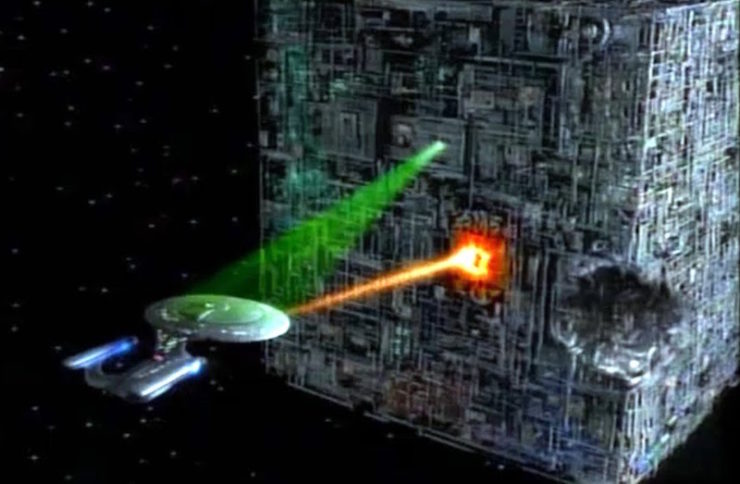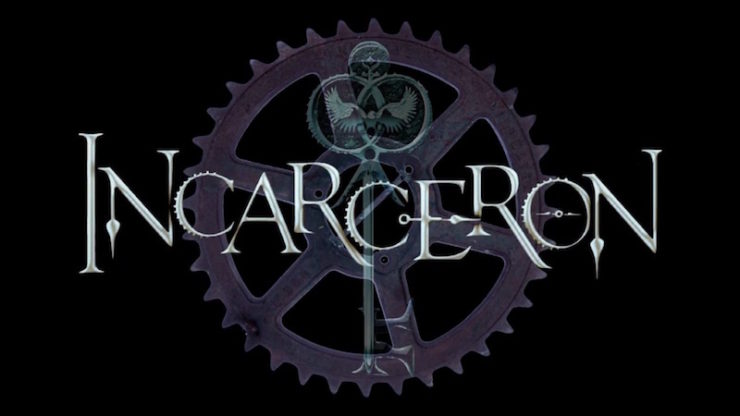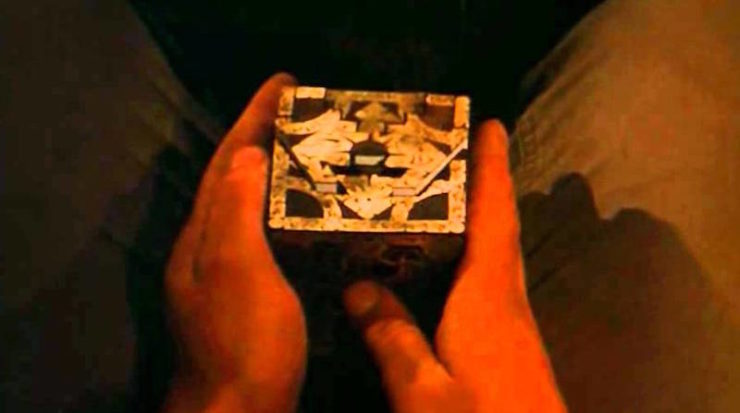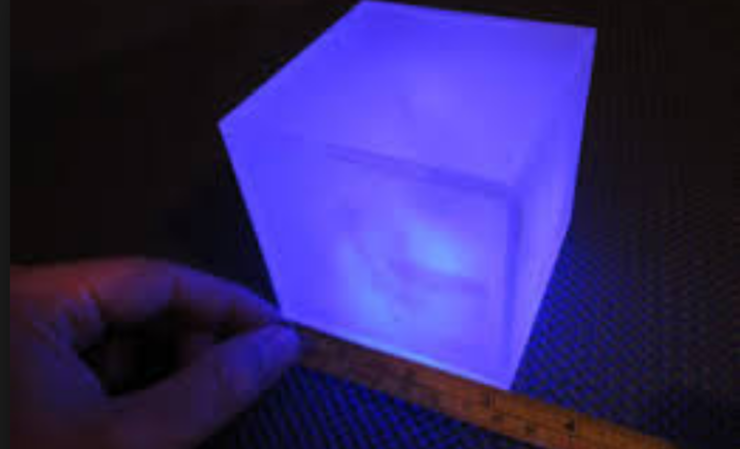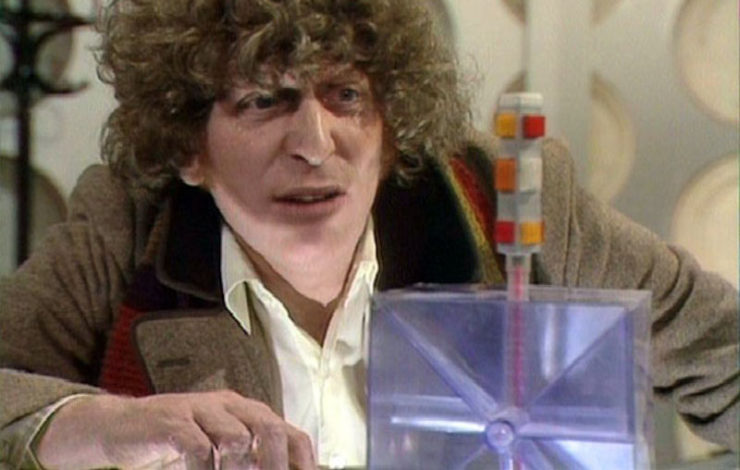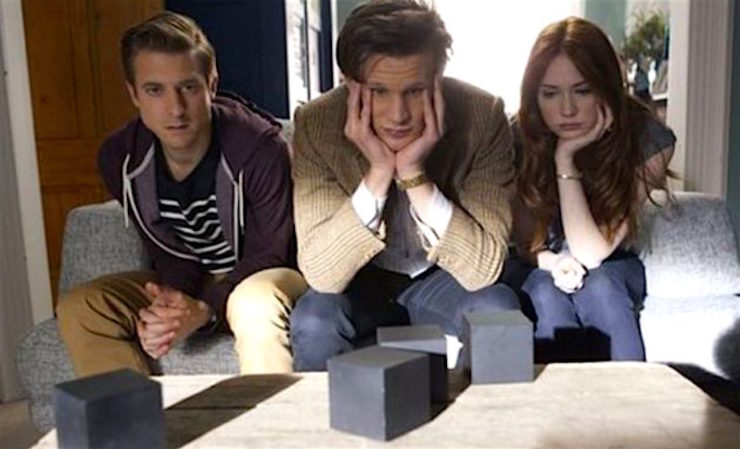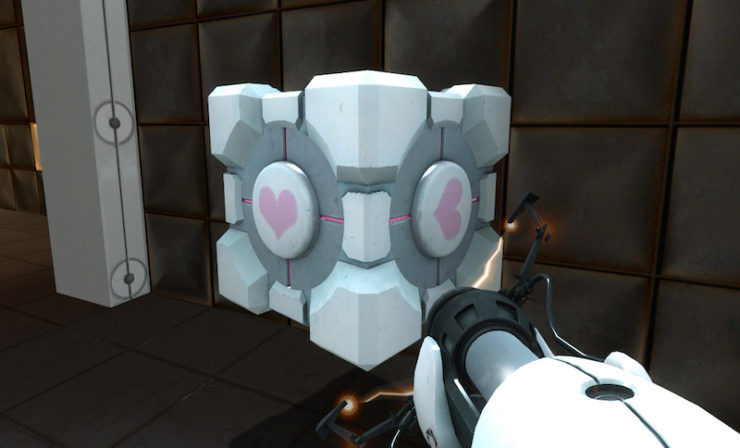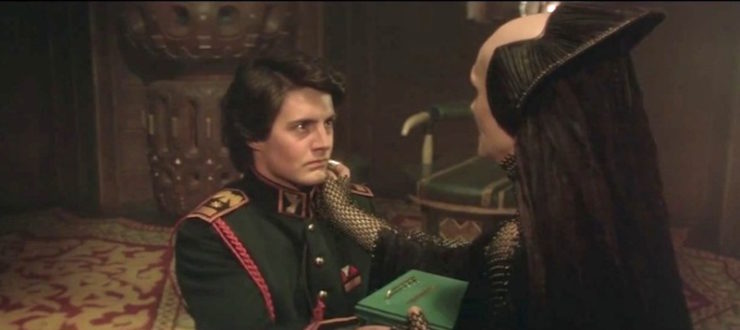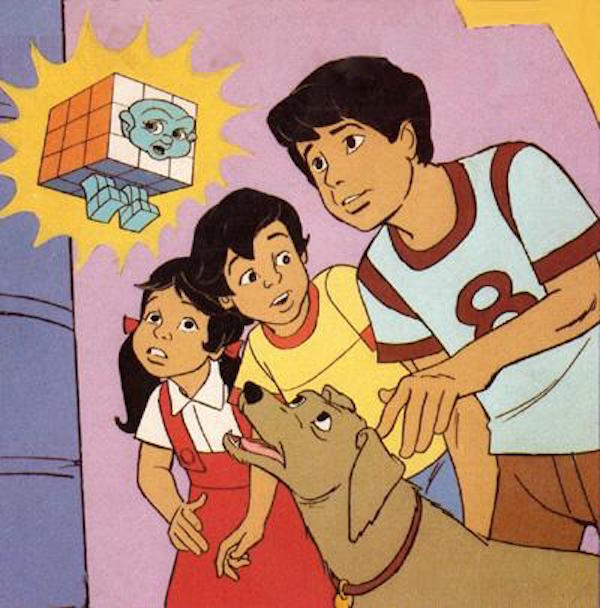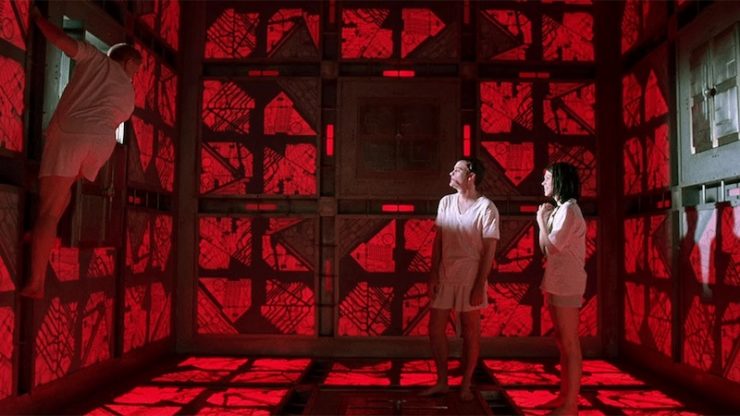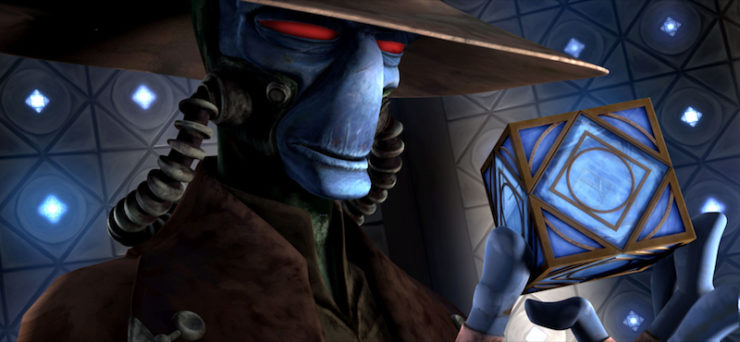There’s no way of escaping it—a lot of the most important magical and powerful items in the multiverse are cubes. There are ship cubes and prison cubes and knowledge cubes and doomsday cubes and pain cubes and friend cubes and oh-so-many other kinds of cubes.
Would you like to meet them? We had a feeling you would.
Borg Cube (Star Trek)
The Borg loved cubes so much, they made their ships into cubes. It’s an odd shape for a spaceship, but you have to give them credit—it makes them distinctive. When they’re way off in the distance, and you’re wondering who is coming at you, that silhouette will clear things up right quick.
Incarceron (Incarceron by Catherine Fisher)
[This part contains major spoilers for the book, so if you’re planning to read it, don’t continue!] This cube hanging from a pocket watch is actually an entire world. That is also a prison. Incarceron starts off as a place were criminals are imprisoned with “enlightened” folk in hopes that more scientific people would have a positive effect on the inmates, creating a utopia. Centuries later, that’s hasn’t exactly worked out, and the people of Incarceron have no idea that they’re living out their lives in a funny little cube while a whole other world waits outside.
Lemarchand’s Box (Hellraiser Series)
There are a couple of different origins for the Hellraiser series’ puzzle box, but the pared-down version is that a toymaker named Phillip Lemarchand created a mystical box, that, when solved in the correct way, acted as a key to another dimension. In the films, the “correct” solution is called the Lament Configuration, and it opens to a realm that may be a Judeo-Christian Hell, or may just be a dimension that’s heavily into bondage. It’s never really clear. What is clear is that once you solve the puzzle creatures called Cenobites pop on over to this dimension and do things that are either super mean or extremely thoughtful, depending on where you fall on the whole pleasure/pain spectrum.
Escafil Device (Animorphs)
The Escafil devices are named after an Andalite (centaur aliens, basically) scientist of the same name, who helped create the morphing tech that allows those who use the cube to turn into animals. If the user has morphing ability, then touching an Escafil device—or “blue morphing cube” as the normies call it—lets them grab the DNA of animals that they can then morph into. It is the best cube for party tricks.
The Key to Time (Doctor Who)
It’s made up of several parts, but once joined together, the Key to Time resembles nothing so much as a cube! A shiny one! There are usually five to six parts to the key, and the Fourth Doctor was once charged with locating those parts by the White Guardian, who meant to restore balance to the universe with it. The Key to Time predictably keeps time in order, maintaining balance in the universe.
The Pandorica (Doctor Who)
A “perfect” prison meant for holding the most dangerous thing in the universe, a wizard who came from the sky and tore apart the world. In reality, the Pandorica was created by the Alliance to trap the Doctor because they believed that he would unmake existence. That turned out not to be the case, though Amy Pond did end up trapped in it for a a couple millennia while the thing was moved around and her centurion husband guarded the thing.
Shakri Cubes—okay wow, Doctor Who just really loves cubes
Billions of these little black cubes suddenly appear on Earth, though humanity can’t seem to figure out what their purpose is. The Doctor arrives in time to learn about them and ends up setting up house with companions Amy and Rory for about a year while he waits for them to start making sense. In the end, the cubes turn out to be a device used by the Shakri, an alien race who made themselves “pest controllers” of the universe. The cubes were meant to be used to wipe out of population in waves, but the Doctor puts an end to that and sends them on their way.
Weighted Companion Cube (Portal)
During Chell’s test in the Aperture Science facility, she is given a Companion Cube by GLaDOS, the AI in charge of her fate. Told that the cube will aid in another test chamber, it is eventually revealed that the cube is meant to be dropped into an incinerator, or “euthanized.” GLaDOS doesn’t let Chell live that down any time soon—she killed her only friend to continue her journey through the facility. Sure, it couldn’t talk, but it must be sentient, right?
Agony/Pain Box (Dune)
A “green metal cube about fifteen centimeters on a side,” the pain box wielded by Reverend Mother Gaius Helen Mohaim is used to test Paul Atreides’s status as either a human… or an animal. Paul proves himself human by putting his hand into the box and withstanding an extraordinary amount of pain while she holds a gom jabbar (a poisoned needle) at his throat. If he moves his hand, he dies. The box makes him think that his hand is melting, but he recovers it undamaged, so who knows how that box works.
Rubik’s Cube (Rubik The Amazing Cube)
What was it about the 1980s that suddenly every single cultural moment needed to be immortalized in cartoon format? Pac-Man—we couldn’t just play Pac-Man, we also had to watch his animated adventures. Punky Brewster—a mere sitcom wasn’t enough, the plucky child also had to have her own cartoon. Ghostbusters—a film in which an occultist receives oral sex from a haint? Obviously it needed to be a children’s cartoon. So it shouldn’t come as a surprise that inventor Ernő Rubik’s iconic early-80s puzzle, the Rubik’s Cube, got a cartoon. Rubik is a sentient, en-souled cube, who can fly for some reason, but who can only come fully to life if his colors are matched up properly. When he falls from the horse-drawn carriage (???) of an evil magician (????), he’s adopted by Carlos, Lisa, and Reynaldo Rodriguez—three children who then have to join Rubik in his quest to thwart said magician (?????). Unfortunately Rubik’s colors misalign constantly, so the kids have to learn to solve the cube in high stress situations while, again, fighting an evil magician. And yes, there’s a Christmas episode.
The Tesseract (Marvel Cinematic Universe)
A vessel for the Infinity Stone within it (it’s the Space Stone), the Tesseract is a powerful object that passes between many ancient civilizations before King Odin of Asgard accidentally leaves it on Earth. (You have to figure it’s an accident, since it’s a weird place to let it hang out, but maybe he thought it’s be safe among the Midgardians?) Whoops! It’s later found by the Red Skull, and then hangs out in the ocean before being recovered by Howard Stark and messed around with by SHIELD. Then then it ends up back on Asgard. And then it’ll probably get smashed at some point to remove the stone inside. But for now, the Tesseract can do some serious damage.
The Cube (Cube)
Ever wanted to be trapped in cubical rooms inside a bigger cube with a bunch of people you don’t know, and no memory of how you arrived there? Then you probably shouldn’t watch Canadian horror films. The Cube itself is full of rooms, but some have traps and others don’t, and figuring out which one will lead to certain death is something of a thought exercise. Well, you can think of it that way if you want. It might make you feel better before the Cube gets you and your new cube-mates killed.
Holocrons (Star Wars)
A holocron is a compendium of knowledge used by both the Jedi and the Sith to store information. The geometry of them can vary, but many holocrons take the shape of a cube, and contain the wisdom of past Jedi and Sith. The data in a holocron is often displayed through an interactive hologram, that the user can speak with and pose question to. Following the Jedi Purge, holocrons became relics, and much harder to find. Grakkus the Hutt got his hands on a few and kept them secretly on Nar Shaddaa, but they were taken by Darth Vader to prevent anyone from using them to train Jedi.
Energon Cubes (Transformers)
Energon Cubes are hard to define. Technically they’re the fuel for the Transformers, but the Decepticons treat them like the sort of drug Nancy Reagan warned everyone about back when the cartoon was still on TV. According to the Transformers wiki, Energon is also “an emanation of Primus, the creator-god of the Transformers.” That’s a lot to hang on a humble cube, so I’ll focus on how they were used in the Transformers cartoon: Soundwave (the one who transformed into a microcassette recorder) creates them, then they’re filled with electricity, magma, or some other energy source pilfered from Earth, converted into Energon, and finally hosed up like primo blow by Megatron. And, like all the best things in the ’80s, they were glowing non pink.
Mother Boxes (DC Comics)
These are living computers, and though they are more often rectangular in the comics, the current DCU films have revealed a number of Mother Boxes that are cube-shaped for the upcoming films (pictured at the top of the article). They have all sort of fancy capabilities, including healing the sick, teleportation, changing gravity, taking over other machines, and communicating telepathically. They are from the planet New Genesis, and can be viewed as a link from Man to God, believe it or not. So that’s a thing.











